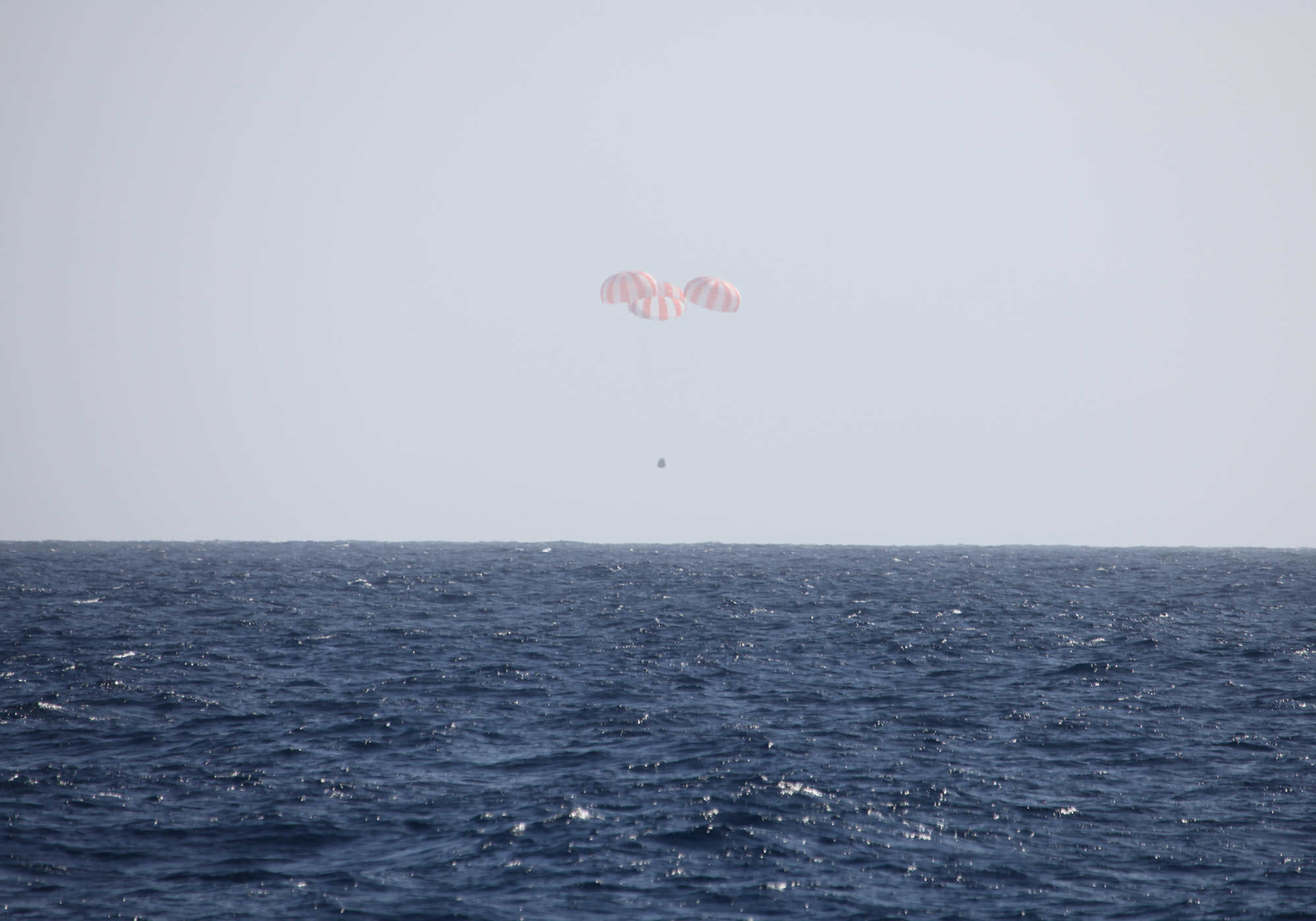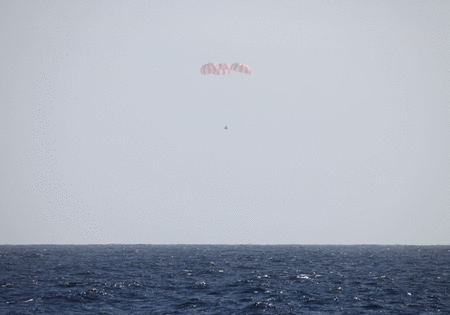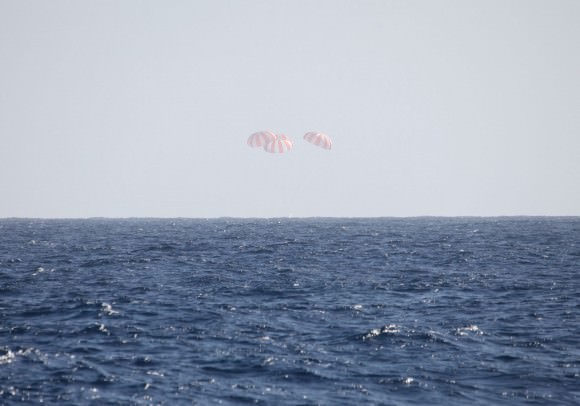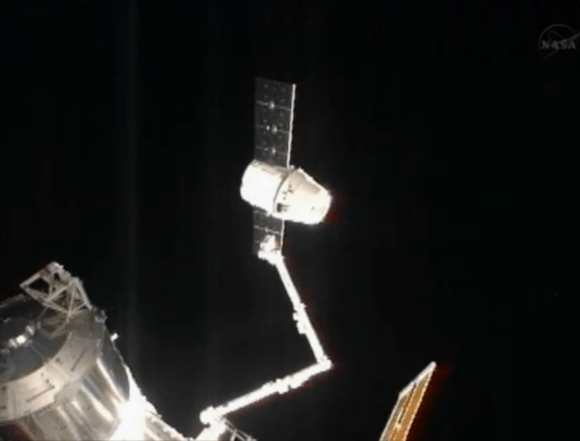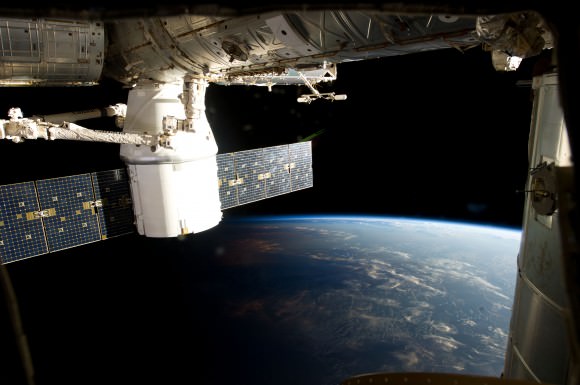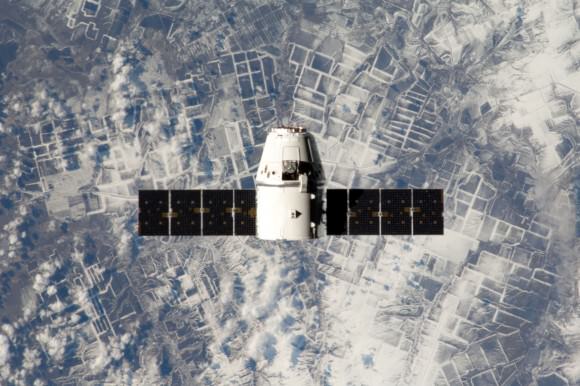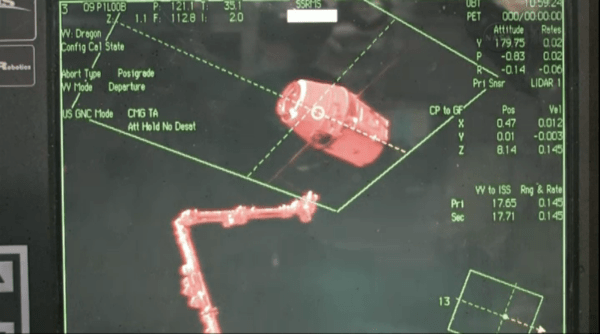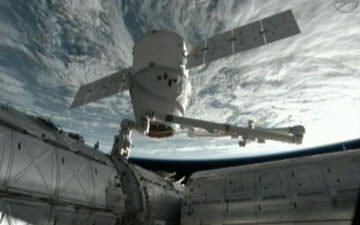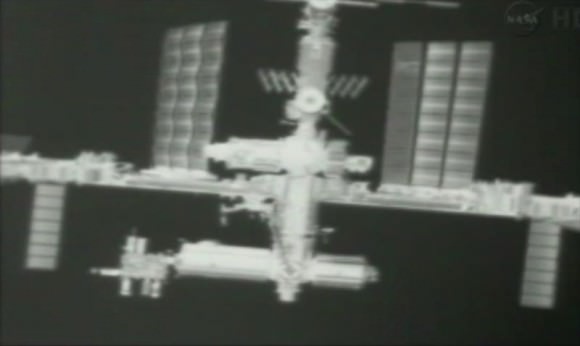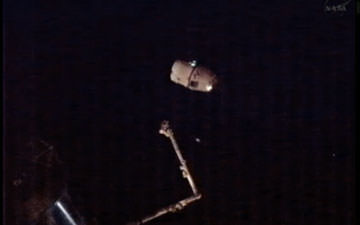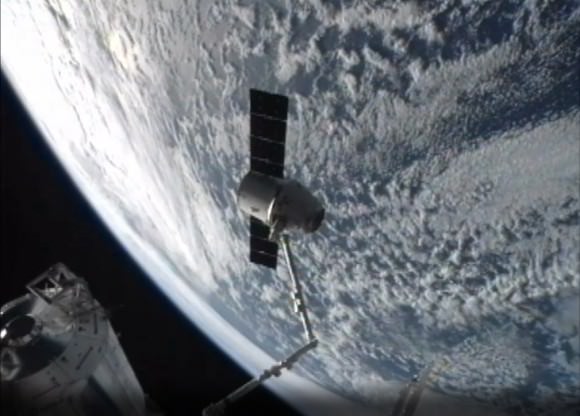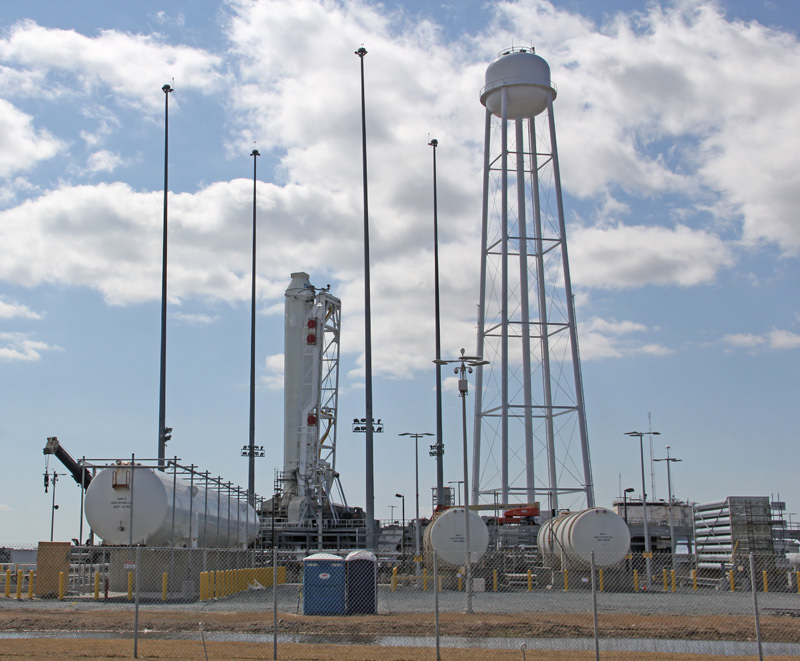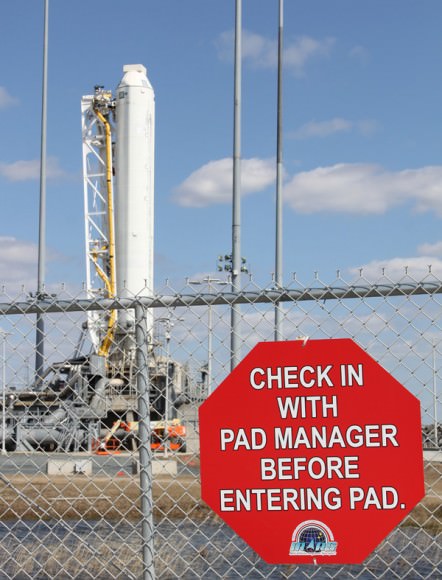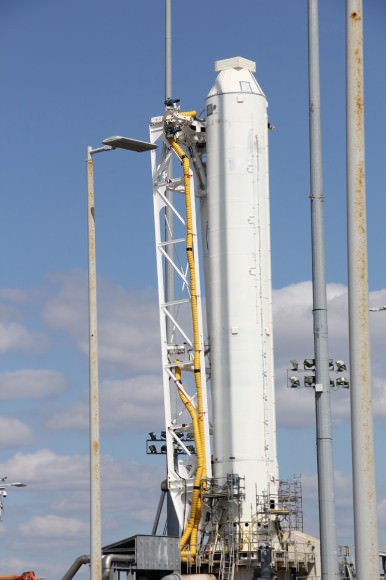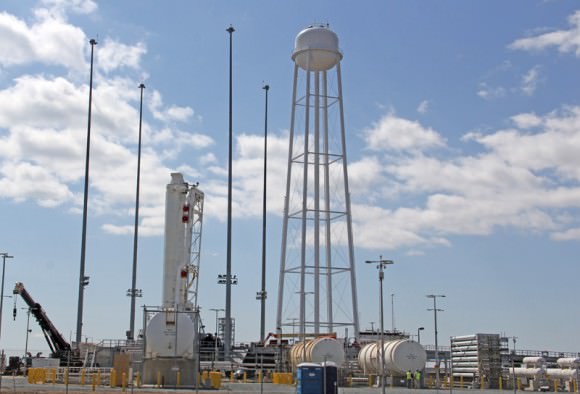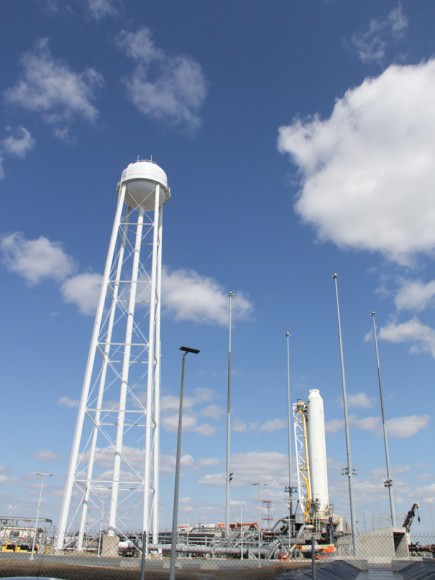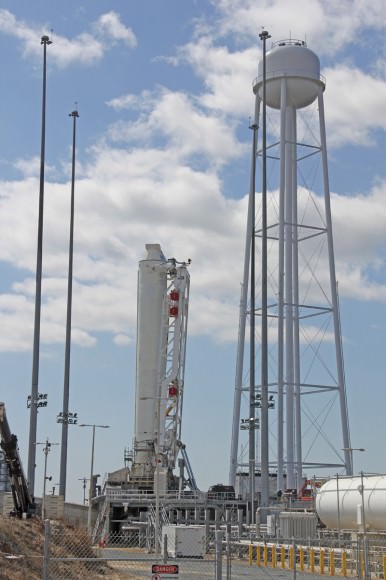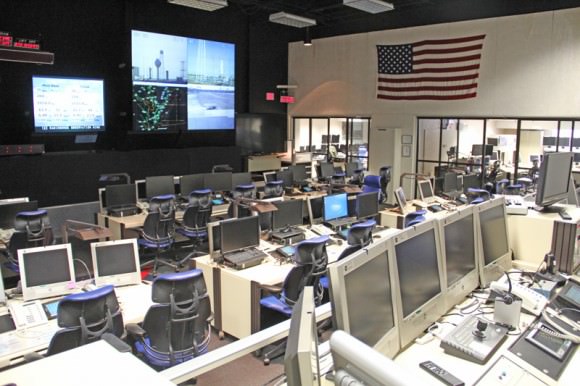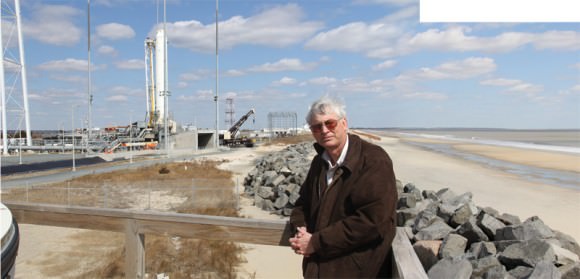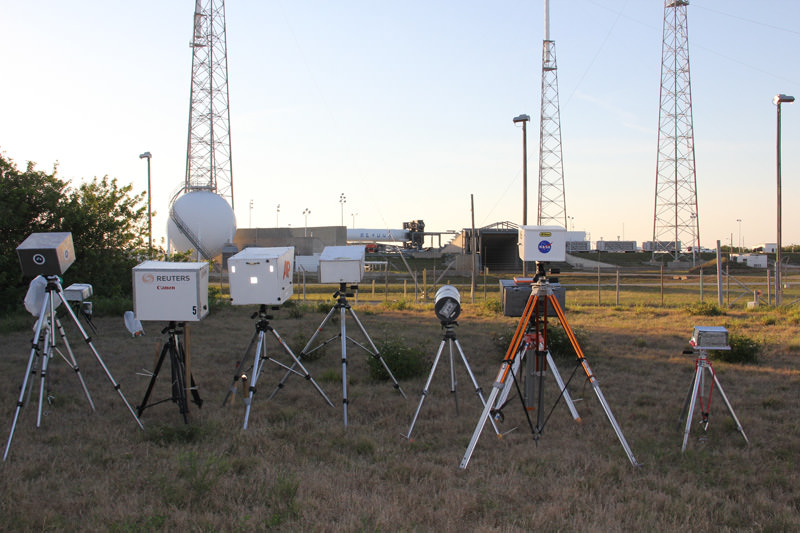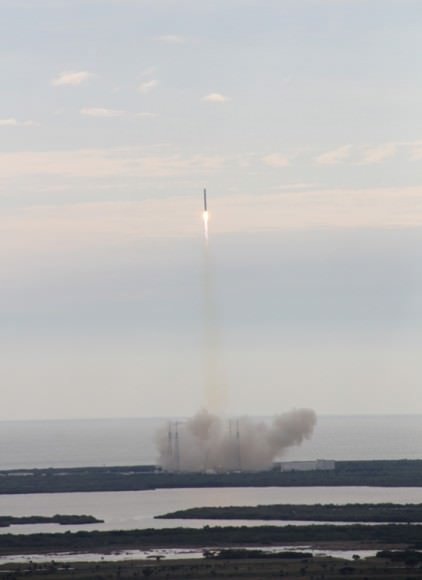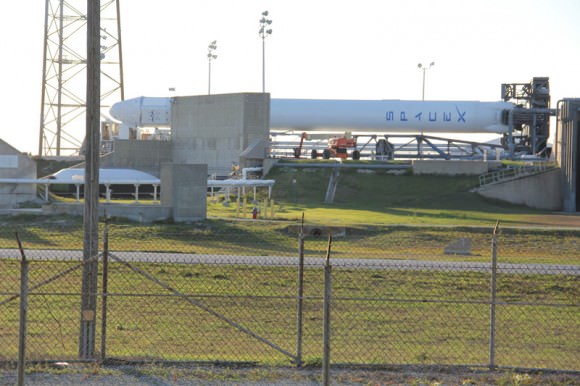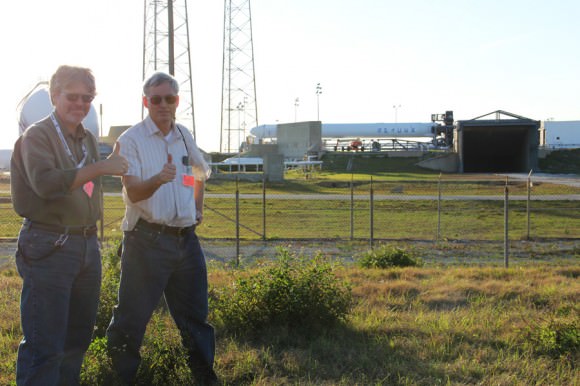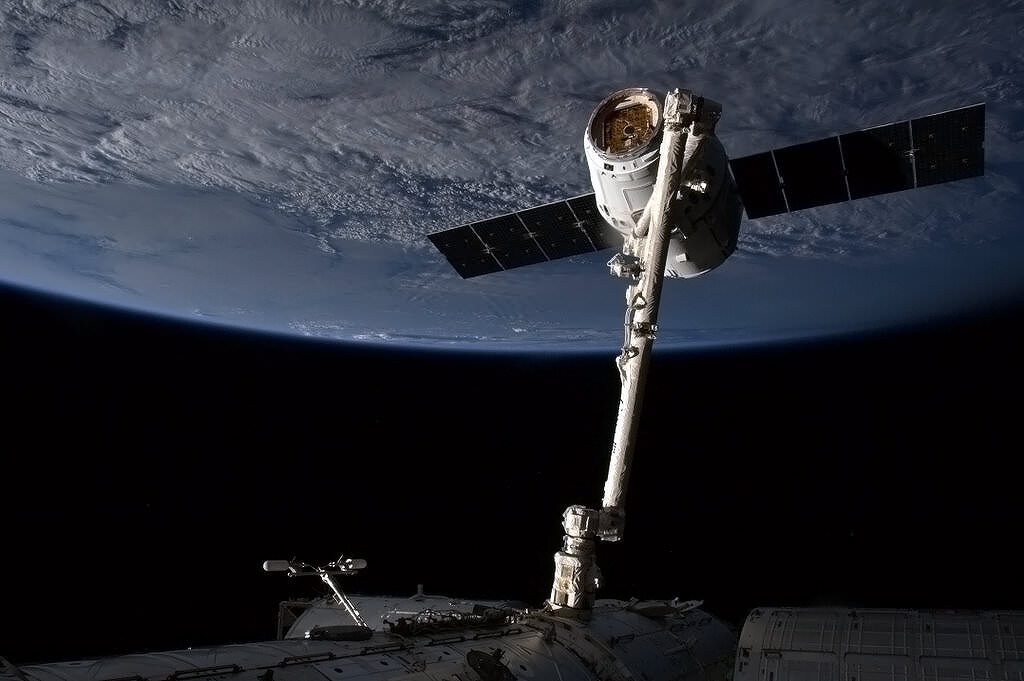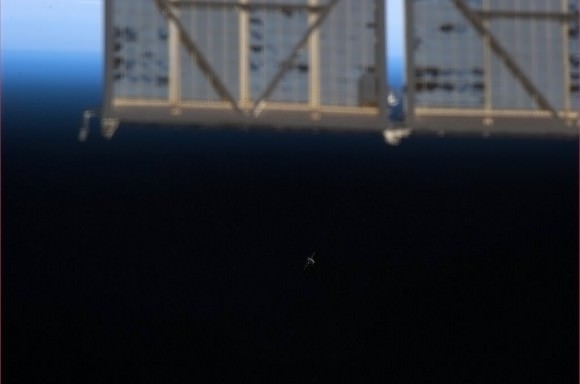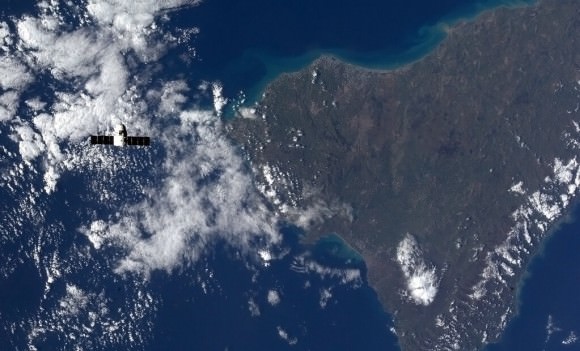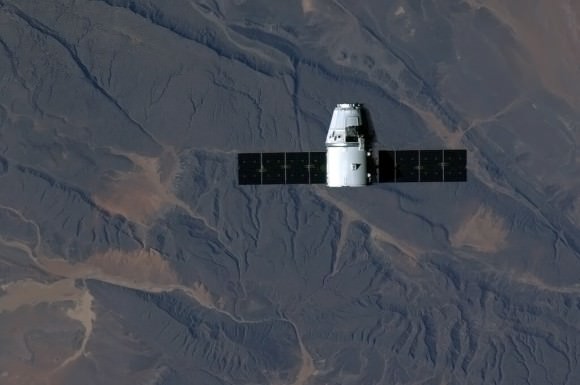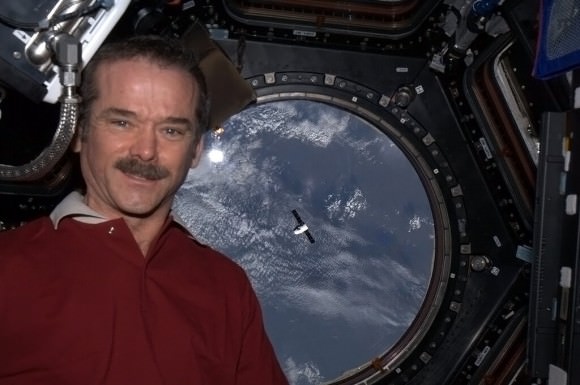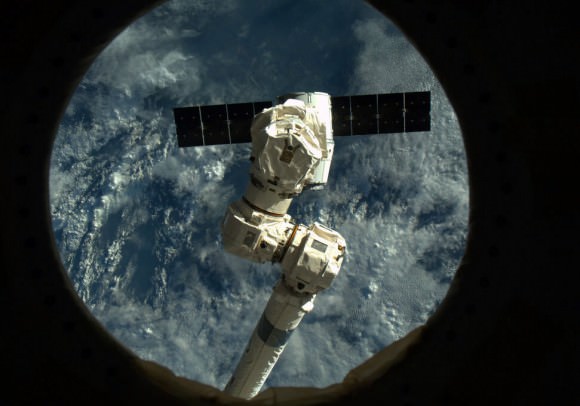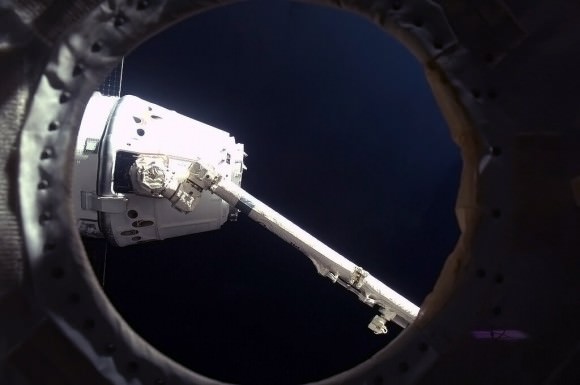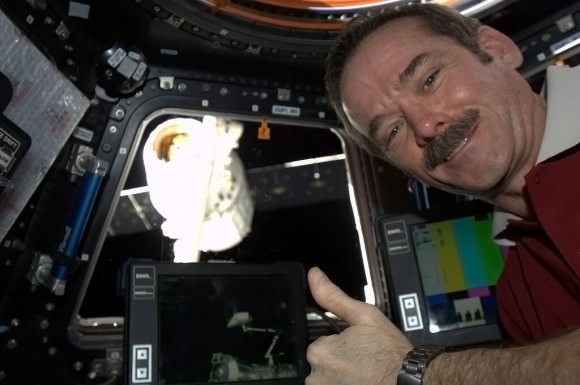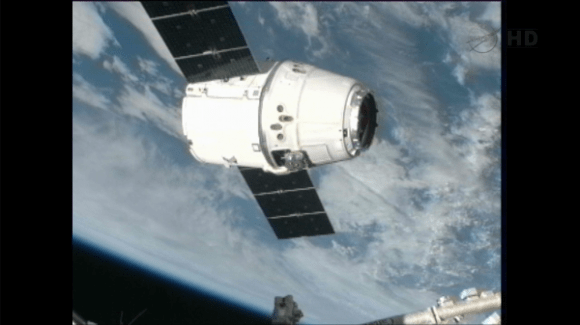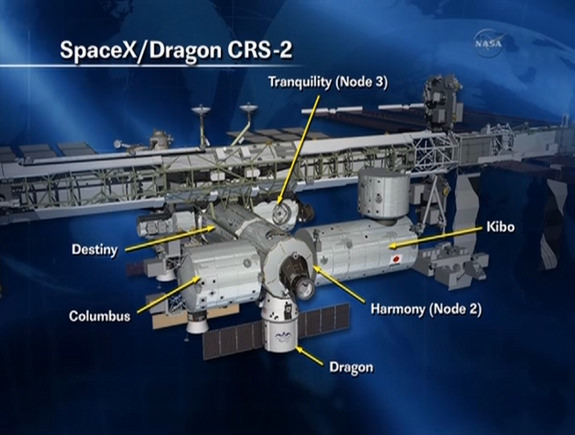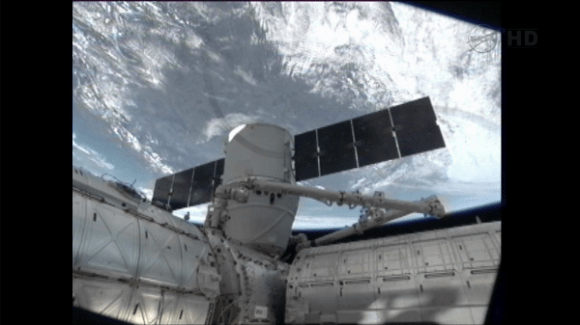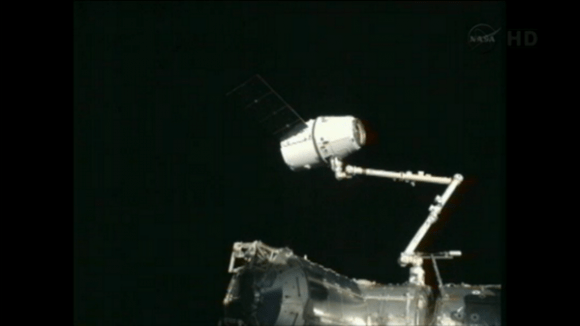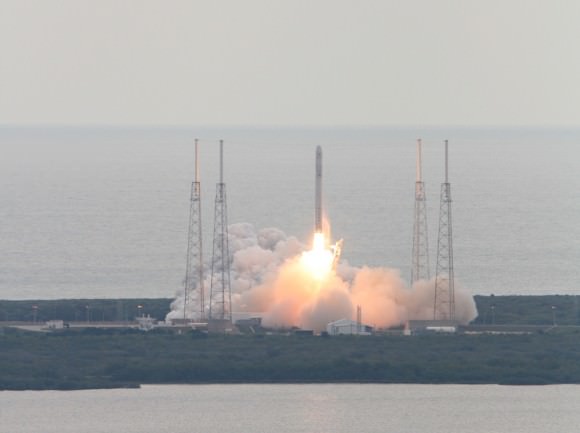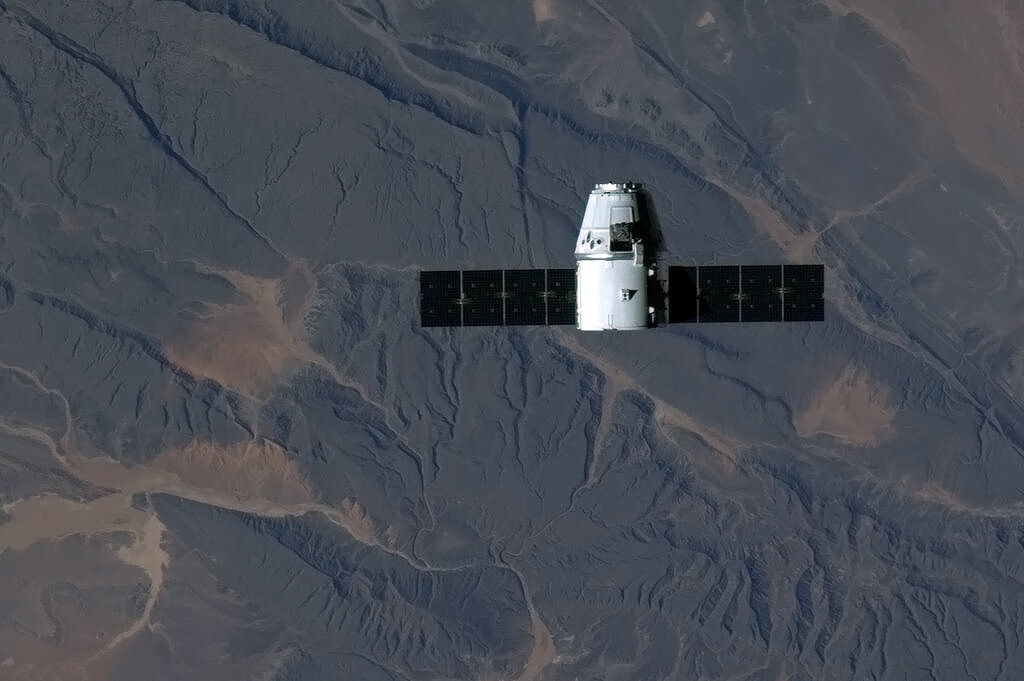Later this year SpaceX will unveil the design of a new and upgraded version of the firm’s Dragon spacecraft that will look like “an Alien spaceship,” said Elon Musk, the CEO and Chief Designer of SpaceX, at a NASA media teleconference on Thursday, March 28.
Musk announced the SpaceX plans at the briefing to mark the successful conclusion of the latest unmanned Dragon cargo carrying flight, known as CRS-2, to the International Space Station (ISS) earlier this week with a Pacific Ocean splashdown on Tuesday, March 26.
Dubbed ‘Dragon 2’, the futuristic capsule will eventually boast the ability to propulsively land on Earth’s surface – perhaps back at the Kennedy Space Center – instead of splashing down in the Pacific Ocean beneath a trio of parachutes.
At the moment, imagery of ‘Dragon 2’ is SpaceX Top Secret ! I asked.
How is the ‘Dragon 2’ different from the current ‘cargo Dragon’?
“It’s going to be cool,” gushes Musk.
“There are side-mounted thruster pods and quite big windows for astronauts to see out,” SpaceX founder Musk explained. “There are also landing legs that pop out at the bottom. So It looks like a real alien spaceship.”
One day, Musk hopes that an advanced Dragon will ferry humans on an interplanetary journey to the alien surface of Mars. Perhaps the lucky astronauts will even visit our Curiosity.
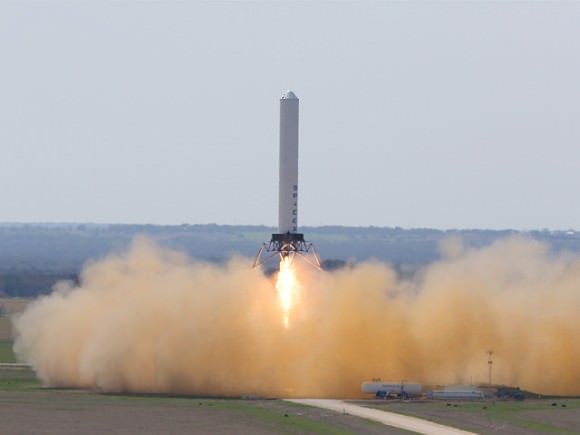
Dragon 2 will also enable a transition to maximize use of the capsule by significantly increasing the quantity of cargo hauled up to the ISS, Musk stated.
The SpaceX Dragon CRS-2 capsule blasted off on March 1 atop a SpaceX Falcon 9 rocket from Cape Canaveral Air Force Station in Florida. It docked at the orbiting lab complex on March 3 and remained attached for 3 weeks until departing and returning to Earth on March 26.
Launching more mass to orbit will be a boon for the science research capability of the ISS, said NASA’s ISS Program scientist Julie Robinson. “We have over 200 investigations active.”
“The SpaceX flights are so important to our use of the International Space Station,” said Robinson.
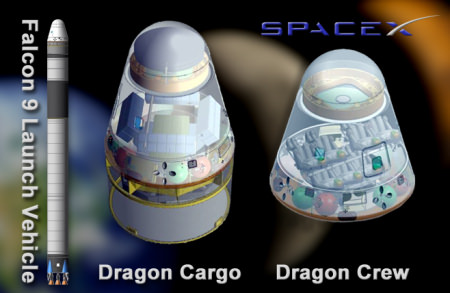
With three successful Dragon docking flights to the ISS now under his belt, Musk said his goal now is to ‘push the envelope’.
Whereas initially SpaceX’s goal was to minimize risk in order to fulfil SpaceX’s $1.6 Billion commercial contract with NASA to fly 20,000 kg of sorely needed science experiments, equipment, gear, food and supplies to the ISS with a dozen Dragon cargo capsules.
SpaceX, along with Orbital Sciences Corp, are both partnered with NASA’s Commercial Resupply Services program to replace the cargo up mass capability the US lost following the retirement of NASA’s space shuttle orbiters in 2011.
NASA Administrator Charles Bolden said at the telecom that the Orbital Sciences Antares rocket is on schedule for a test flight from NASA Wallops in Virginia slated for mid-April.
Antares will launch the unmanned Cygnus cargo spacecraft to the ISS. Read my launch site update and visit to Antares – here.
Simultaneously, SpaceX will also debut a more powerful version of the Dragon’s Falcon 9 launch vehicle later this year that eventually will be both recoverable and reusable – long the Holy Grail in space exploration.
The new Falcon 9 version 1.1 “will be a meaningful upgrade” said Musk. “It will have 60-70% greater thrust capability, greater redundancy and more engine to engine protection. It will be more robust.”
Falcon 9 v 1.1 will incorporate the significantly more powerful Merlin 1-D first stage engines that will increase the liftoff thrust to about 1.5 million pounds – and serve as the launch vehicle for ‘Dragon 2’.
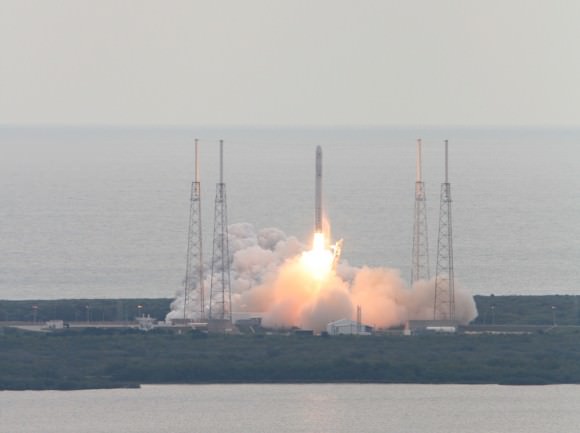
SpaceX will also start testing the capability to recover the spent Falcon 9 first stage from the Atlantic Ocean. Thereafter SpaceX will eventually try and have the first stage fly itself back to the Cape Canaveral, Florida launch complex using the so called “Grasshopper’ version of the Falcon 9.
But Musk strongly advised that will take several test flights to demonstrate such recovery technologies.
“I really want to emphasize that we don’t expect success on the first several attempts,” Musk emphasized. “Hopefully next year, with a lot more experience and data, we should be able to return the first stage to the launch site, deploy the landing legs and do a propulsive landing on land back at the launch site.”
The overarching goal is to dramatically cut costs and increase efficiency to make space more accessible, especially in these ultra lean budget times.
SpaceX is also developing a manned version of the Dragon capsule and aims for the first crewed test flight perhaps in 2015 depending on NASA’s budget.
If all of Musk’s dreams work out, they could spark a revolutionary change in spaceflight and the exploration and exploitation of the High Frontier.
…………….
Learn more about SpaceX, Antares, Curiosity and NASA missions at Ken’s upcoming lecture presentations:
April 20/21 : “Curiosity and the Search for Life on Mars – (in 3-D)”. Plus Orion, SpaceX, Antares, the Space Shuttle and more! NEAF Astronomy Forum, Suffern, NY
April 28: “Curiosity and the Search for Life on Mars – (in 3-D)”. Plus the Space Shuttle, SpaceX, Antares, Orion and more. Washington Crossing State Park, Titusville, NJ, 130 PM


